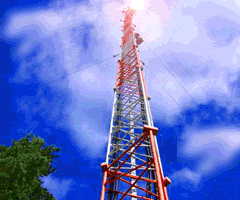


 |
 |
 |
| |
||
Staying Calm with the CALM Act |
||
Yes, it's here. We've commented - officially and unofficially - on the task of legislating against the laws of physics and trying to create algorithms that will manage psychoacoustics. But it's the law of the land. However, there's a real silver lining. It's in the hardware. Check it out. You'll see that the gear can do a lot on both sides - in line and monitoring. In line, new equipment really can make a difference in sound quality at the receiver. Processing should be different for digital distribution compared to analog (BTS) audio and the latest equipment takes a lot into account. Understand that the CALM Act and its implications, while going a certain distance toward "normalizing" audio, will, at the same time, compromise dynamic range. For the mediaphiles tuned to your station, it'll be a big disappointment. But most viewers seem willing to sacrifice range for control - even given the myriad errors that that control will generate. The bottom line, though, is that compliance is mandatory and the latest equipment will keep you compliant, maintain reasonable level relationships, e.g., program to commercial to commercial to program, and not annoy listeners. On the monitoring side, compliance is important, but proving your compliance is right up there next to it. You can be totally within the rules and yet one complaint and you're looking at a Notice of Apparent Liability...unless you can prove otherwise. Today's monitoring and logging equipment is so much better than that of even a couple of years ago. With it, you can
If you're still noncompliant, we can help with equipment selection, installation, and programming to take advantage of all of today's equipment's features. That will 1) Get you and keep you compliant, 2) provide you with the latest logging and monitoring, and 3) document your compliance should complaints ever arise. Here are some thoughts on the whole CALM concept.
|
|||